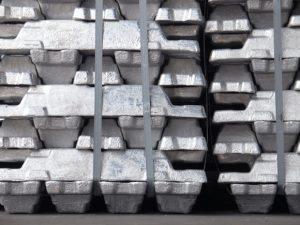Aluminum prices are being driven high by constrained supply rather than rampant demand
Consumers have looked aghast at rising aluminum prices this year and wondered how much longer it can continue.
The explanation that global economies are bouncing back from pandemic lockdowns has encouraged many to hope that once supply chains are restocked, demand will ease and aluminum prices will fall.
But several sources are suggesting the tightness of the aluminum market is more deep-seated.
Each month, MetalMiner hosts a webinar on a specific metals topic. Explore the upcoming webinars and sign up for each on the MetalMiner Events page. The next webinar is scheduled for Thursday, Sept. 30.
Aluminum prices and the demand picture
Inventory supply chain restocking is driving demand in North America and Europe. That process has been exacerbated by a nightmare global logistics market hampering deliveries and pushing up costs.
But a Reuters article points the finger firmly at a supply-side squeeze, principally in China and to a lesser extent among Western producers.
According to the post, China is in the grip of a power crunch. A shortage of coal supplies, toughening emissions standards and strong demand from manufacturers and industry have pushed coal prices to record highs and triggered widespread curbs on usage.
As a result, China has implemented rationing during peak hours in many parts of the country. Some residential customers are facing cuts and outages.
As winter approaches, rationing is likely to fall more on industrial uses. Residential consumers would face temperatures below zero in northern provinces, where failure to provide heating would risk social unrest.
Against a backdrop of tight coal supplies, toughening emissions standards have forced some provinces to ration coal-fired power production to meet China’s pledge to cut energy intensity during this decade. According to Reuters, output curbs have hit steel, aluminum and cement industries particularly hard. About 7% of aluminum production capacity has been suspended.
A later Reuters post states that some 2.33 million tons per year of smelter capacity has been cut because of energy restrictions linked to Beijing’s decarbonization goals. Rather than a planned increase in annualized capacity this year of 1.8 million tons, it could be well into 2022 before that capacity is gradually brought to market. As such, that would prolong the tight market and elevated aluminum prices.
Outside of China
Outside of China, capacity has been slow to restart.
Alcoa is still sitting on some 20% of its total capacity idled. That is not by a lack of demand or poor prices but by constrained power supply (at least outside of the Middle East).
Even the firm’s restart of its 60% owned Brazilian Alumar smelter after six years idle is by no means certain to run to capacity. The country is still facing drought-restricted hydro electricity production.
A gradual improvement in global shipping constraints and more balanced supply chain inventory levels will gradually ease demand next year.
However, it is becoming increasingly clear that the aluminum supply market could remain tight through the middle of next year.
Aluminum prices have potential to not just punch through the LME’s $3,000 per metric ton level. Not only that, they could stay there in coming months.
Do you know the five best practices of sourcing metals, including aluminum?




Leave a Reply